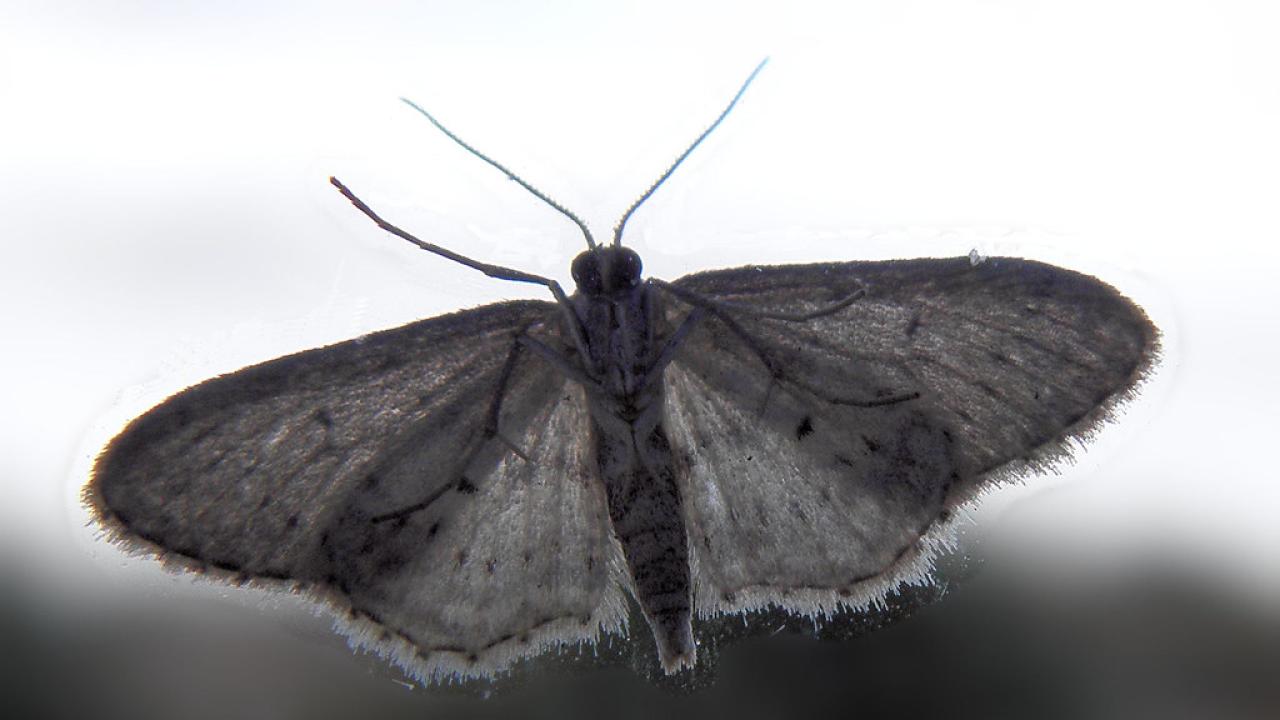
From the stickiness of gecko feet to the strength of spider silk, nature has been the inspiration for many new technologies. For instance, robots designed to search the air for traces of bombs or other volatile chemicals use strategies developed by moths searching for mates by following their smell. Those strategies are quite efficient, but Antonio Celani, an ICTP physicist who studies animal behavior, wondered what strategies would emerge if they didn’t just search individually, but worked collectively. A new paper published in Physical Review E explores the possibility of how working together could make the searching process more efficient.
Each moth searches for the scent of a potential mate with sparse clues, as swirling air breaks up pheromones emitted by other moths into patches scattered through the air. This means that more common ways of using scent to navigate, like going from weaker scent to stronger scent, don’t work very well. Instead, moths alternate between surging forward and zigzagging across the wind.
“Male moths are exquisitely selfish animals, they compete to get to the females as quickly as possible,” says Celani. “They don't see very well and usually fly at dusk or during the night so cues from other moths are not expected to play an important role in their search.” To find out how collective searching might affect the speed of finding something by smell, the team created a digital chimera, a virtual mix of creatures. “We combined the exceptional individual search ability of moths with the social attitude, and good vision, of birds,” Celani explains. “In fact, the model we use here for social cues is a classical one meant to describe bird flocking.”
Celani and his colleagues created a computational model to find the optimal way for those digital chimeras to use different types of information. When a group of individuals are collaborating, two types of clues are available. Private information that each agent collects includes smell and wind direction of turbulent air. Unshared with others, this information is similar to what moths collect. But in the model, there is also public information, or social cues from the behavior of other individuals. These include the visual cues of turning or grouping individuals, and indirect information about wind and patches of scent that other agents might find.
The model sought to find out the best way to combine the public and private information: how much should each chimera trust the behavior of others versus its own senses? By changing the degree that individuals trusted their neighbors, Celani and his colleagues found that the most efficient way to find the source of a smell came when the behavior of others was trusted more than privately collected information. While it is vital information, the optimal strategy was to trust others’ behavior over their own senses about 80% of the time.
One of Celani’s co-authors is Mihir Durve, an Indian PhD student at the University of Trieste supported by funding from ICTP. “Our ‘fictitious agents’ can locate the odor source in difficult conditions very efficiently,” says Durve. “The efficiency is so good that the agents find the odor source in almost the minimum possible time, as if they already know its location.”
In his PhD studies at ICTP, Durve was interested in understanding the collective behavior of animals. “For me, being a student in ICTP is a very enriching experience.” Some of the questions he is interested in include: how do thousands of starling birds fly in sync? Why do some animals choose to stay in large groups? Are there some advantages in doing so? “To understand how birds fly together we created a few fictitious agents on a computer. Then for this study, we modeled our fictional odor sniffing agents to behave similarly to both birds and male moths,” explains Durve. ”The most interesting possible implication of this work for me is that such a simple set-up inspired by animal behavior could lead to development of efficient robotic teams looking for gas leaks or other scents.”
“We can summarize [our results] as a simple behavioral rule,” the research team writes in the conclusion of the paper. “Follow the advice of your neighbors, but once every five to seven times ignore them and act based on your own sensations.” While the model is based on fictional creatures, the researchers note that the question of the best way to blend private and public cues arises in many different situations. From future swarms of robots searching for gas leaks to a crowd of humans trying to get out of a smoke-filled room, both fully independent and fully herd behavior is not nearly as effective as a blend of the two.
















